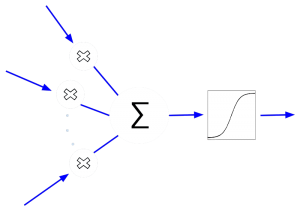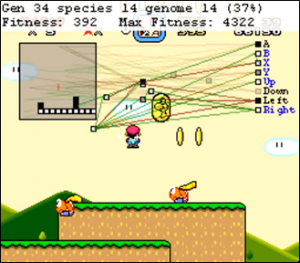MarI/O, the inspiration of this project, was installed and tested.
The MarI/O AI is a collection of scripts, which contain the logic of the AI, and states, which save the progress of the AI. Using the Lua scripting language, it is possible to implement the AI into the so-called BizHawk emulator, which is able to emulate multiple platforms while also allowing for scripting with Lua. BizHawk is typically known in the speedrunning scene, where people try to write scripts that play a game perfect to the frame, also known as TAS (tool-assisted speedrun).
The training process of the AI is simple: the AI tries to get as far as possible by giving input to the emulator. This is done with a so-called fitness-value, which is incremented when the AI is moving without hitting anything and when the AI collects coins or scores otherwise. The higher this value gets, the better the AI performed.


